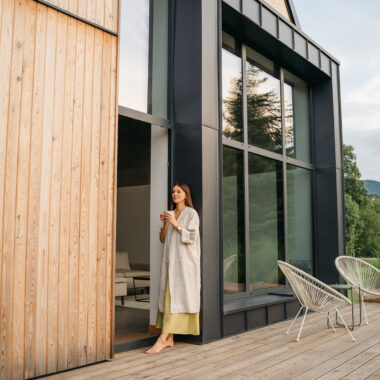With changing family dynamics and the growing trend of working from home, adaptable home layouts have become more popular than ever. Homeowners and renters alike are looking for ways to maximize their current square footage without the need for major construction. Here’s a guide to help you make your home layout more adaptable with flexible spaces, reconfigured basements, and even accessory dwelling units (ADUs).
1. Reimagine Basement Spaces for Recreation or Work
- Basements are often underutilized, but they can be transformed into recreation rooms, home gyms, or even dedicated office spaces. To maximize comfort and functionality, start by planning for lighting and ventilation, as basements often have less natural light.
- Tip: Consider multi-purpose furniture, like fold-out desks or storage benches, to add versatility without sacrificing space.
2. Design a Flexible Home Office
- With the rise of remote work, creating a dedicated office space has become essential. If a separate room isn’t available, consider using dividers, furniture, or clever storage solutions to create a workspace that doesn’t interfere with home life.
- Tip: Use modular desks or mobile shelving to adapt the space as needed, whether for work, studying, or other purposes.
3. Consider an Accessory Dwelling Unit (ADU) for Flexibility and Rental Income
- If zoning allows, adding an ADU can significantly enhance both your property’s value and functionality. ADUs provide extra living space for guests, extended family, or even rental opportunities.
- Tip: Research local ADU regulations and, if possible, design the space to be self-sufficient with a bathroom, small kitchen, and private entrance.
4. Leverage Smart Home Technology for Efficient Space Management
- AI-driven technology can make a flexible space more efficient and user-friendly. Smart home devices can control lighting, security, and even furniture placement, adapting to daily needs.
- Tip: Use smart lights, thermostats, and even motorized furniture to adjust the space’s purpose throughout the day without physical rearrangement.
5. Use Modular Furniture for Adaptable Living Areas
- Modular furniture is ideal for creating spaces that serve multiple purposes. Sofas that convert into beds, foldable desks, and stackable storage make it easy to reconfigure your layout as needed.
- Tip: Choose furniture pieces that can be rearranged or stored to create an open layout when hosting or to section off space for different activities.
Conclusion: Enhancing Home Adaptability for a Versatile Lifestyle
Creating an adaptable home layout not only makes the most of your space but also ensures that your home can grow with you as your needs change. By integrating flexible designs, modular furniture, and smart home technology, you can transform your space to accommodate work, leisure, and family needs seamlessly. In today’s market, a well-planned adaptable home can also enhance property value, making it a wise choice for those looking to invest in their future.




